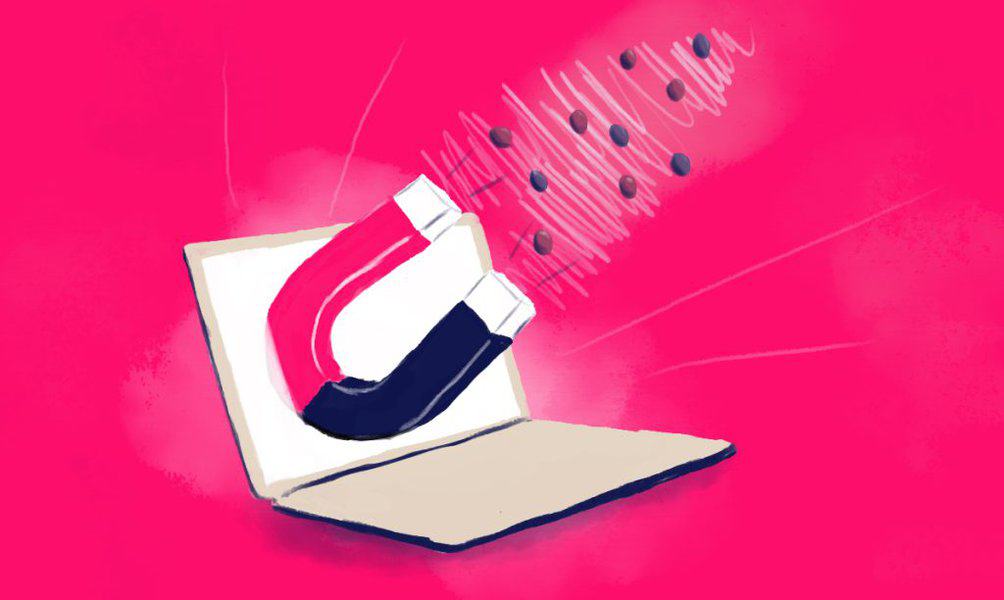Think about the last time you were scrolling through your feed, and even though your mind was at least a million miles away, something caught yourey ...
Lead vs Prospect vs Opportunity
Written by: Victoria Yu
Victoria Yu is a Business Writer with expertise in Business Organization, Marketing, and Sales, holding a Bachelor’s Degree in Business Administration from the University of California, Irvine’s Paul Merage School of Business.
Edited by: Sallie Middlebrook
Sallie, holding a Ph.D. from Walden University, is an experienced writing coach and editor with a background in marketing. She has served roles in corporate communications and taught at institutions like the University of Florida.
Updated on February 6, 2024

Lead vs Prospect vs Opportunity
- Leads, Prospects, Opportunities: What Are They?
- Why Does It Matter If It’s a Lead, Prospect, or Opportunity?
- How Do I Convert Potential Clients Into Paying Customers?
- How Do I Get More Potential Customers?
- Conclusion
What’s the difference and why does it matter?
So you’ve finally opened for business and you’re looking to make your first sale. But if you’re selling something big like property, marketing is a bit more complex than setting up a booth on the sidewalk. You’re going to need a strategy to find and attract customers.
Early in their purchasing journey, potential buyers are referred to as “leads,” “prospects,” or “opportunities.” But what’s the difference between the three? And how do you turn them into real sales?
You’ve come to the right place, as this guide lays out the differences and definitions of these three terms so you know just how to handle them, make sales, and propel your business.
Leads, Prospects, Opportunities: What Are They?
The terms lead, prospect, and opportunity describe customers at different stages of the sales funnel, which is the journey potential customers go through to become buyers of goods.
It’s called a funnel because the number of potential customers decreases at each successive stage. But while there are fewer potential buyers the further down the funnel you go, each of them is also more likely to deliver an actual sale.
Sales Leads
At the top of the funnel are your sales leads, which are still a bit of a mystery. Maybe they interacted with someone from your company at a conference or networking event, or maybe you just saw their name and position online and took down their info.
You don’t yet know whether they’re interested in your products or even part of your company’s target market. They’re merely a lead, a possibility. To learn more, you reach out and talk to them, via email or cold call or chat message. Maybe it ends there, or maybe it develops into something more.
Sales Prospects
Once you’ve “qualified” your lead and confirmed the possibility of interest, they turn into a prospect. Qualifying the lead means you’ve ensured the potential customer meets some of the criteria of your target market or ideal customer profile.
Not every lead turns into a prospect, and not every prospect starts out as a lead. A customer can be disqualified from further pursuit if you discover they’re not what you’re looking for, and a returning customer is a prospect who’s already been qualified.
Sales Opportunities
Finally, an opportunity is a prospect with a pain point your company can solve, a clear interest in your offering, and a strong chance of becoming a paying customer.
But just because the opportunity matches your ideal customer profile and is interested in your offerings doesn’t mean it’s a done deal. They might have some budgetary constraint or timing issue, or maybe they’re also interested in a competitor.
This is where the hard work of sales comes into play, as it’s up to you to negotiate with them and seal the deal.
Why Does It Matter If It’s a Lead, Prospect, or Opportunity?
Strict delineation between leads, prospects, and opportunities helps companies and sales departments allocate their time and resources appropriately. About 1 out of 10 leads turn into sales, so while you want to get as many leads as possible, your sales reps need to be careful about spending all their time on leads that don’t deliver.
Similarly, clear definitions of these three terms makes for more accurate sales forecasts. It would be disastrous for a company to increase production to meet an influx of sales opportunities, only to learn they were all leads that went nowhere!
How Do I Convert Potential Clients Into Paying Customers?
Guiding potential clients through the sales funnel stages can be difficult, but there are a few tricks to ease the progression.
How Do I Convert a Lead Into a Prospect?
Turning a lead into a prospect is widely seen as the most difficult step, and everyone has their own way of doing it. The first thing to do is determine your company’s ideal buyer persona, also known as an ICP for ideal customer profile.
If you’re selling high-end furniture, your ICP might be an upper-class middle-aged man without children and an annual income of at least $100,000. If you’re providing logistics consulting to business, your ICP could be a Rust Belt shipping company with at least 100 employees and more than $5 million in annual revenue. Again, this varies by company.
Once you’ve determined your buyer persona, talk to your lead and get more information to see how they stack up. Your questions should be about key factors like location, budget, and authority. A common lead qualification method is BANT, which stands for Budget, Authority, Need, and Timeframe.
The questions include:
- Does this customer have the budget to purchase my product?
- Does this customer have the authority to make the purchase?
- Does this customer have an immediate need for my product?
- Is the customer hoping to solve their problem in a workable timeframe?
A yes on only one of these criteria makes a customer a cold lead, two or three is a warm lead, and all four gives you a hot lead – which often leads to a sale. To remember these criteria, BANT sounds like banter, which is what you’ll likely do to get this information from the lead.
You can also quantify a lead’s potential with a method known as lead scoring, in which the lead scores points for every criteria they meet, including demographics, BANT, whether they’ve visited your website, and so on.
There’s no universal system for graduating a lead to a prospect and from there to an opportunity. Ultimately, determining how your business and sales reps qualify a lead is up to you and your business, as is deciding how qualified a prospect needs to be to become an opportunity.
Just be aware that if a lead ticks all your boxes, they’re likely closer to an opportunity than a prospect.
How Do I Convert a Prospect Into an Opportunity?
Remember, a prospect is a lead that’s been qualified as a suitable customer, while an opportunity has a pain point your company can fix and an interest in your goods or services.
Thus, to turn a prospect into an opportunity you’ll need to talk to them, learn more about their wants and needs, and entice them with the benefits of your product.
This step depends entirely on the skill of your sales rep, who should be genuinely interested in the customer and have an honest conversation to see if they’d be a good fit. Once there’s a real relationship, it’s much easier to negotiate a deal that makes both parties happy.
You might be eager to close the sale at this point, but a crucial tip for engaging prospects is to be patient – as a customer, nothing is more off-putting than a pushy salesperson! You and your reps need to know when to back off and give the customer time to mull it over.
If you’ve done your job well, the sale will blossom on its own.
How Do I Get More Potential Customers?
The process of identifying and contacting potential customers is called sales prospecting, but it starts at the top of the sales funnel with lead generation. As we said earlier, only about 10-15% of leads turn into purchasing customers. This means that increasing the number of sales requires exponentially increasing your leads.
There are billions of people in this world, so how do you figure out which might turn into a good prospect? Here are some suggestions for getting top quality leads.
Cold Contacting
Cold contacting potential buyers, whether via phone, email, or message, is a tried-and-true method of generating leads. To be clear, cold contacting refers to reaching out to potential customers you and your company have never spoken to before.
More than 8 out of 10 buyer businesses (82%) agree to meet sellers who take the initiative to contact them first, according to a study by sales consultancy Rain Group. It’s clear that cold contacting is actually an effective way of acquiring qualified sales opportunities.
You’ll want to cater your approach to your ideal buyer – in the same study, Rain Group found that most executive-level buyers prefer to be contacted by phone. A well-researched email or LinkedIn message might also do the trick – just make sure to customize the message for the potential buyer.
Especially when cold contacting leads through social media, you’ll want to ensure that your qualification process determines if the person you’re talking to is authorized to make the purchase or not. The last thing you want is to waste your time sweet-talking an intern!
After you speak to them, be aware that potential buyers are likely to prospect and qualify your company in return, so make sure your website and LinkedIn profile are up-to-date and looking sharp.
Lead Generation Companies
Lead generation firms like Nolo, Zoominfo, and G2 will do all the hard work and sell you leads for a fee.
While they’ll certainly provide you with plenty of leads, the quality of these leads can be dubious. We’ve seen cases where the leads were many years old or far removed from the company’s ideal customer.
Be sure to read up on these companies before pursuing making a commitment.
Gated Marketing Content
As a customer, we’ve all been there – you can only access this video, print this free document, or receive a free sample if you provide your name and email address. While frustrating as a consumer, this means that the consumers who do provide such information are already semi-qualified because they have an interest in what you provide.
This is called an information qualified lead or marketing qualified lead depending on whether they exchanged their contact info for access to more info or for your marketing tools, respectively. Once they talk to a sales rep, they’ll hopefully be on the path to a purchase.
Generally, this strategy works best for companies that can disseminate digital samples to B2C customers browsing online. But it could also be applied at a trade show; you might encourage buyers to drop their business card for a free sample or a chance to win a prize!
Good Marketing
Once in a blue moon, the stars will align and a lead will call your company first, interested in making a purchase and looking for more information. These types of leads are called sales-ready leads and are actively pursuing your product.
While these might seem like a gift from the heavens, these leads are actually a result of good marketing. It means your marketing has succeeded in spreading the word and appealing to the right people.
To get more of these leads, make sure your marketing reaches and appeals to your target demographic. Carefully consider where you place your ads, and check to make sure your website is optimized for SEO and if your promo offers are enticing to your target customer’s budget.
Once you get your first few customers, be sure to ask them how they came to learn about your company, and invest more into those marketing tools!
While sales-ready leads might seem like a great gift, remember that you’ll still have to qualify them just like any other lead. Even if they want to buy, they may not have the budget or your product might not be a good fit for their needs. Avoid hasty promises, and treat these leads with the same care as you would any other lead.
Conclusion
A potential buyer is called a lead, prospect, or opportunity depending how close they are to making a purchase. Not every lead turns into a sale, so it’s important to generate a ton of leads – the higher the quality the better.
Maintaining a clear distinction between leads, prospects, and opportunities improves and simplifies resource allocation and sales forecasting, so it’s wise to keep in mind. And by fine-tuning your lead generation, lead qualification, and overall sales process, you’ll make life easier for you and your sales team – and likely boost your business growth!
FAQs
A sales cycle is the process a single lead goes through to become a customer. A sales pipeline is an internal view of your company’s lead generation and lead conversion processes. Finally, a sales funnel is an aggregate view of all of the company’s current sales cycles.
The sales funnel is most useful for reporting because it shows how many customers are at each stage of the cycle, giving you a good forecast as to when you’ll see new sales.
You can get more potential customers by cold contacting a qualified lead, purchasing a lead generation service, and investing in more effective marketing. High-quality leads are more likely to become paying customers, so be sure your sales team does their research and acts professionally when pursuing leads.
Tools that help you manage your lead conversion and sales processes are called customer relationship management (CRM) tools. Some popular ones are Microsoft Dynamics 365 Sales, HubSpot, and Pipedrive.
Featured Resources

Online Lead Generation: How to Get More Leads Online
Published on April 10, 2024
Read Now

What Is Lead Nurturing?
Published on April 10, 2024
When consumers think about buying everyday items, such as food, apparel, or toothpaste, they usually expect an instantaneous sales transaction.Amazo ...
Read Now

How to Create a Lead Magnet That Converts
Published on February 20, 2024
The idea of product trials and free samples has come, full force, into the era of content marketing. That means companies that neglect offeringprosp ...
Read Now
